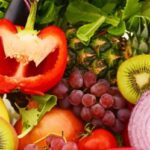
I explained the importance of understanding the overall outline of the Food Labeling Standards (the Standards, the Notifications, the Guidelines) and cross-sectional/individual, structure in an external lecture entitled “Food Labeling Standards and Important Points in Practice” the other day. At that time, I mentioned how difficult to operate “tasks seemingly easy to do without special pieces of knowledge”, but I would like to take this opportunity to provide further insights on this topic to our overseas readers as well. Below, I will quote the relevant parts from our “Guide book Food Labeling Law and Related Business Practical Points – from scratch, the 2nd edition (originally in Japanese only)” that was released in the past.
“You can create (incorrect) food labels without knowing the packaging/sales methods of the product” (Part 3, Chapter 1).
One day you might be surprised to see an indication on the draft product package design, which claims “Made with carefully selected locally-grown ingredients from XX Prefecture! Rich in XX (nutrients). This product is natural-oriented and has a positive effect on beauty”. Then you might want to inform your project leader that either the ingredients or the claims on the package design of the product must be changed. The project leader might get upset saying, “It’s too late! The launch date is just around the corner”. A bigger problem (than being scolded) for you would be that the project leader might make a wrong decision, which would be to sell the products as they are without changing the ingredients or the package design of their product because they are running out of time for the product launch. And the wrong decision you might eventually make could be to “do nothing despite noticing the possibility of trouble in the future”.
“Checking Is Harder” (Part III, Chapter 2)
While creating food labels is the process of accumulating facts one by one, checking food labels is, on the other hand, similar to the process of breaking down into elements one by one. A checker is supposed to confirm a label that has not been created by himself/herself without knowing with what intentions the creator of the label has accumulated the facts on the food label. Therefore, the checker needs to expand their imagination, for example, by making a hypothesis about the creator’s intention. In this respect, checking is more difficult than creating. This is because, while the creation process aims at a single point, the check process must pursue various possibilities.
The former example was about understanding an overview of the product plan before the creation of the food label, so that the standards and rationale for the claim of the product could be checked in advance. However, due to various circumstances, there are many cases where the necessary information cannot be obtained in advance. In addition to that, creating labels and the claims on them can be done without the outline information of the product plan in many cases. What I would like to emphasize is the importance of understanding the general outline of the product planning before creating a food label. The latter is about a principle. In many situations, checking without understanding the creator’s intention can be effective and it is important to make a mechanical check according to the manual without being bound by the creator’s intention. However, I think you should always keep in mind that “checking is difficult” in principle.
“A task that can be done somehow without relying on a systematic framework“ as shown on the parable above may be applied to the other jobs too. Aside from the risks and other aspects, it is important to consider whether organizational improvement opportunities are being missed because many tasks can be done without the need for the verbalization or systematization of the tasks. (However, even when the verbalization and systematization are in place, the periodic reviews of those task flows should be implemented.) While working on the second edition of this book, I’ve been reminded of the importance of reviewing even familiar tasks with a fresh perspective. This point will be a key focus in my upcoming lectures.
Share/Like/Follow:
Newsletter Signup
We issue monthly e-newsletters, which provide you with the latest updates on food labeling/regulations in Japan.
If you want to make sure to not miss any issue, please click below.
Related Service
Research Services on Ingredients & Food Labeling -For the Japanese Market-
We verify the conformity of ingredients and additives with the standards for use in Japan based on specifications such as formulation lists. We also verify the conformity of the proposed labeling of ingredient names, nutrients, etc. with the labeling standards based on specifications such as formulation lists.

Label bank Co., Ltd. CEO (Founder)
Born in Japan. Working on solving various issues related to food labeling operations. Also regularly gives lectures for various organizations in Japan.
Co-author of ‘Latest edition: Guide book Food Labeling Law and related business practical points – from scratch (Japanese version only)’ (DAI-ICHI HOKI CO., LTD/2019).






